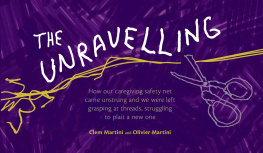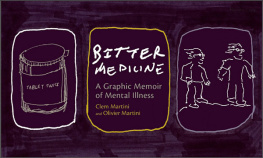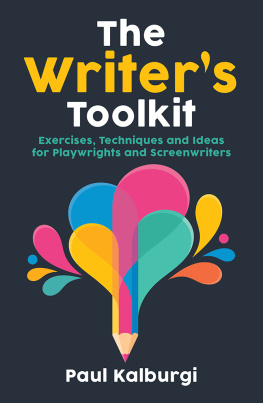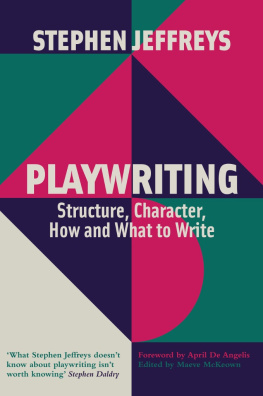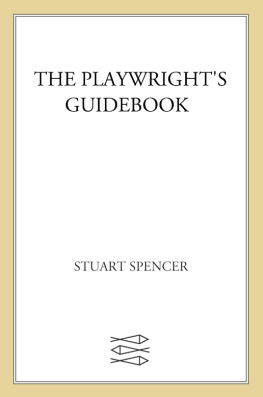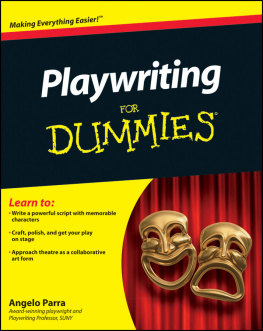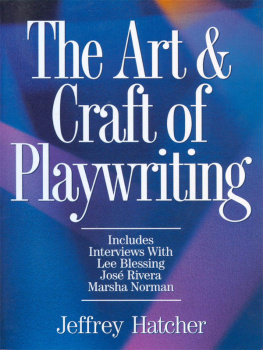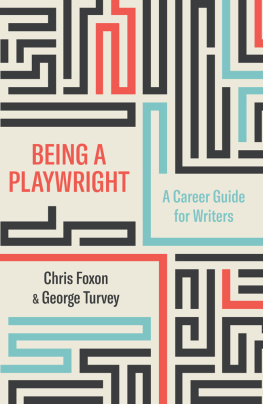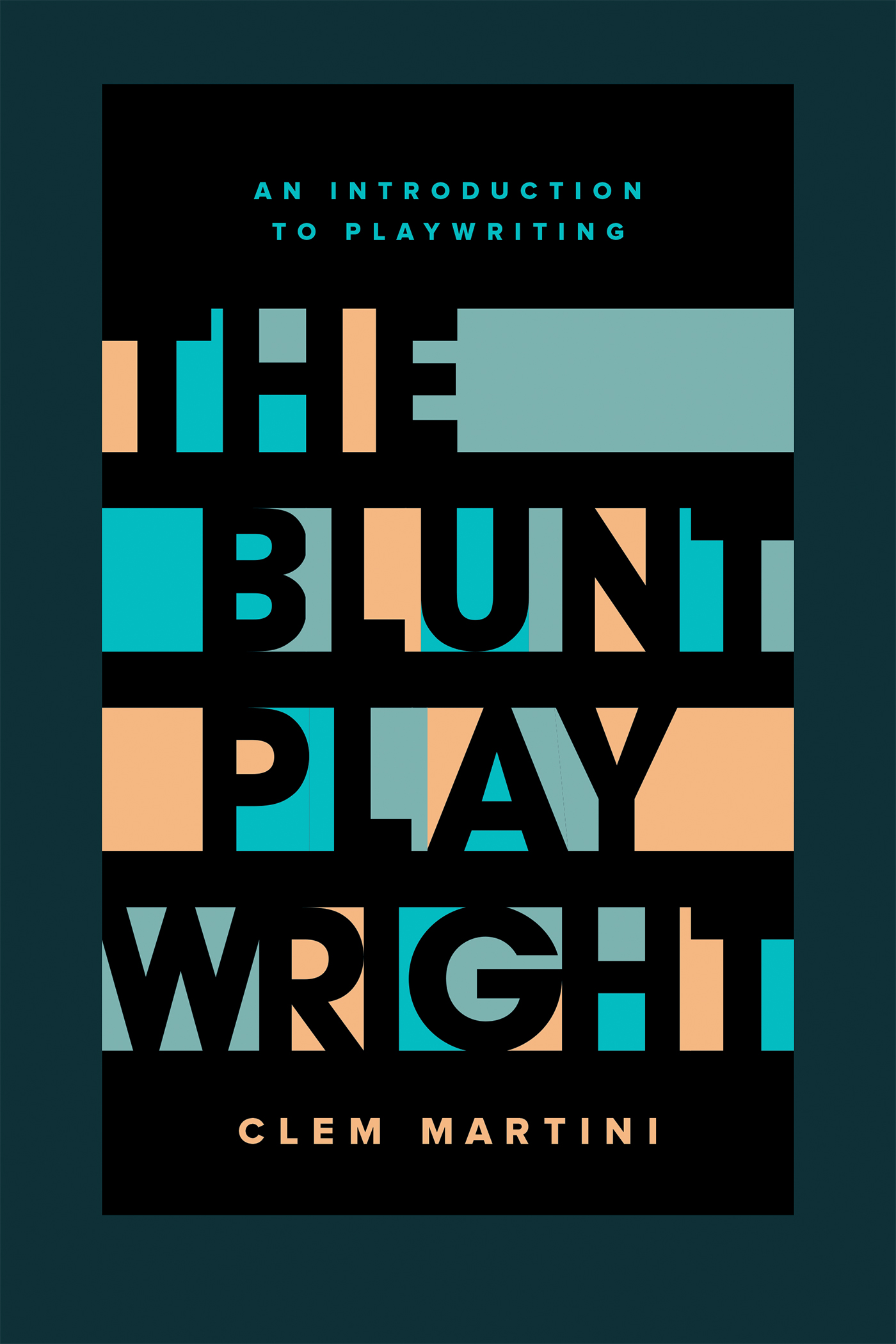
The Blunt Playwright
An Introduction To Playwriting
Clem Martini
Second edition
Playwrights Canada Press
Toronto
The Blunt Playwright: An Introduction to Playwriting Copyright 2019 by Clem Martini
First edition: October 2006 . Second edition: September 2019 .
The copyright of the individual contributions herein remains with their respective authors.
Helen at Risk copyright 1995 by Dana Yeaton. Reprinted by permission of the author.
Author photo Jayda Novak
Jacket design by Kisscut Design
Playwrights Canada Press
- Richmond St. W., Toronto, ON MV X
No part of this book may be reproduced, downloaded, or used in any form or by any means without the prior written permission of the publisher, except for excerpts in a review or by a licence from Access Copyright, www.accesscopyright.ca.
Library and Archives Canada Cataloguing in Publication
Title: The blunt playwright : an introduction to playwriting / Clem Martini.
Names: Martini, Clem, author.
Description: Second edition.
Identifiers: Canadiana (print) 20190166762 | Canadiana (ebook) 20190166770
| ISBN 9780369100191 (softcover) | ISBN 9780369100207 (PDF)
| ISBN 9780369100214 (EPUB) | ISBN 9780369100221 (Kindle)
Subjects: LCSH: Playwriting Textbooks. | LCSH: Drama Technique Textbooks. | LCGFT: Textbooks.
Classification: LCC PN 1661 .M 28 2019 | DDC 808.2 dc
Playwrights Canada Press acknowledges that we operate on land, which, for thousands of years, has been the traditional territories of the Mississaugas of the Credit First Nation, Huron-Wendat, Anishinaabe, Mtis, and Haudenosaunee peoples. Today, this meeting place is still home to many Indigenous people from across Turtle Island and we are grateful to have the opportunity to work and play here.
We acknowledge the financial support of the Canada Council for the Arts which last year invested $ million to bring the arts to Canadians throughout the country the Ontario Arts Council (OAC), Ontario Creates, and the Government of Canada for our publishing activities.




Welcome
Welcome to the second edition of the The Blunt Playwright.
I initially wrote this book over a decade ago when I realized how thoroughly colonized Canadian theatre remained, even after decades of notable, homegrown, work. In Canadian classrooms, libraries, and bookstores you could find any number of texts on the topic of playwriting, but not one that employed regular exemplars written by Canadians. It was as though Canadian playwrights and playwriting had never existed.
I embarked on a search, found of course that there was no shortage of terrific Canadian plays to draw from, and so set out to create a text that used examples from many countries, including Canada.
Since the book was first launched, however, many things have changed. The technology employed in the profession is probably the most noticeable aspect. It was, for example, standard at one time for a playwright to slip their brand new script into a brown envelope and mail it to a potential producing theatre. Now, although some theatres continue to require a hard copy, the majority request electronic submissions. At the same time, adaptations and improvisational approaches to playwriting have gained greater currency. This second edition attempts to reflect these changes.
As might be expected, new and exciting plays have been written since The Blunt Playwright first hit the bookshelves. Ive included scenes from several recent works in this edition.
As well, I received feedback from readers that found the writing exercises included in the book enormously useful, and consequently have added a couple more to the roster.
Over a decade after having written The Blunt Playwright, I remain convinced that there is no livelier, more genuinely human form of writing than playwriting, and this book continues to offer the same message about the writing process that it did when it was first released. There are no easy routes to success; no secrets, no rules, no shortcuts. There continues to be only one way to find your way to the audience and that is to write your way there.
So enjoy the process, set your fears aside, and get busy.
Warning
There are thousands of books out there on writing. If you are naive enough to believe that by simply reading a book, any book, you will suddenly become a writer, you are sadly mistaken. If you picked up this book with that end in mind, stop reading now.
Close the book.
Slip it back on the shelf. Walk away.
Further Warning
If youre still reading, it can be assumed that its because you believe that writing is an art that requires study, thought, and hard work.
Good.
That being said, there are many, many people out there who believe that the road to happiness lies in writing. They believe that by writing a play they will become rich. Or famous. Or rich and famous. And then they will become happy.
This is also nonsense.
In the lofty hierarchy of the theatre, playwrights appear very low on the totem pole indeed. Producing artistic directors rule the theatres and so control the purse strings. Playwrights are hired, perform their necessary duties, and are sent packing. And in the great overarching hierarchy of the entertainment industry that embraces theatre, film, television, novels, and interactive gaming technology, theatre is the poor country cousin. Film and television writers make infinitely more money, novelists are accorded infinitely more international esteem and recognition, and writers in the interactive gaming field exist in a whole other dimension of cool. So if you hope to upsize your budget or ego by becoming a playwright, stop reading now.
Youre still reading, so its reasonable to assume this is because you are interested in playwriting and in writing in general, and that you want to know more about the craft. Its fair to assume you are willing to work hard, because much of any success that you may achieve in writing most is dependent upon how hard you are willing to work.
Introduction
When reading about playwriting its easy to assume that the craft crawled from the steaming primordial murk of prehistoric storytelling, evolved by stages through the Greek and Roman ages, quickly loped through the Shakespearean and the Shavian eras, and finally walked erect and fully formed into a modern age dominated by British and American writers.
The largest concentration of English-language play-producing theatres exist in America and Britain respectively, and theatres in those countries are most inclined naturally enough to produce works written by fellow American and British citizens. Consequently, the majority of contemporary plays written in the English language are of American or British origin.
And yet there are interesting and important works being written the world over. If these works dont make their way to mainstream American or British stages, that doesnt make them any less vital.
Next page

